Image Gallery: Dinosaur Day Care
Paleo Nursery

This artist's interpretation shows 190-million-year-old nests, eggs, hatchlings and adults of the prosauropod dinosaur Massospondylus in Golden Gate Highlands National Park, South Africa. While the mother dinos likely were 20 feet (6 meters) long, while their eggs were only 2.3 - 2.7 inches (6 to 7 cm) wide.
Dinosaur Embryo
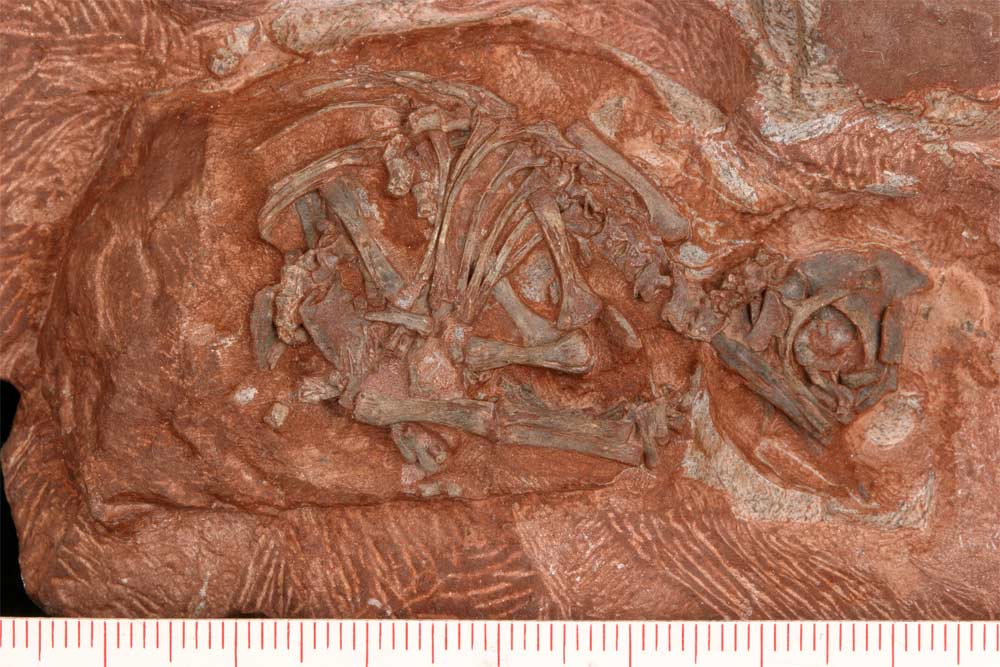
This is a close-up of an embryonic skeleton of the dinosaur Massospondylus from a clutch of eggs at the 190-million-year-old nesting site found in the Golden Gate Highlands National Park in South Africa. The head was pushed out of the egg after death, probably because of gases produced by decay. [Read full story]
Baby Prints

This is a handprint of the baby dinosaur Massospondylus from the nesting site in South Africa. The handprint shows that the hatchlings walked on all fours, whereas the adults are known to be bipedal.
Plaster Balls

Paleontologists Robert Reisz and David Evans excavate dinosaur nests from the site in South Africa. Because the nests, and the eggs and embryos inside, are so delicate, the researchers had to encase them in plaster and fabric to protect the contents during removal from the rock.
Protecting the Nests
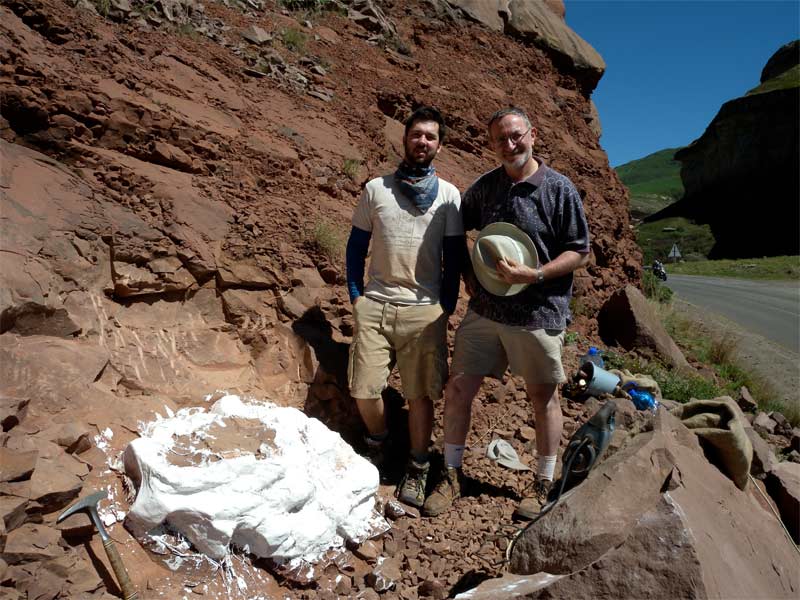
Once removed from the rocky environment, the dinosaur nests of the prosauropod Massospondylus were brought back to the lab where Reisz and Evans, and their colleagues, could analyze them more closely.
Crowded Nest

A nest of a dinosaur named Protoceratops andrewsi, a sheep-sized plant-eater related to Triceratops, was discovered in the Gobi Desert in Mongolia. The nest conatained the remains of 15 infant dinosaurs.
Tiny Tots
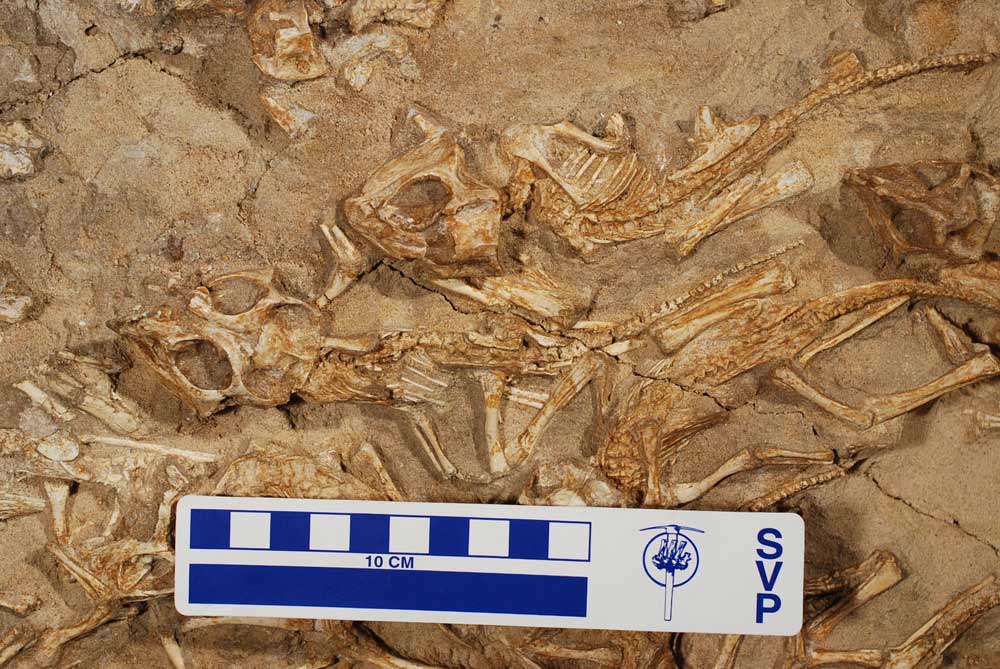
The infants in the nest were about 4-6 inches (10-15 centimeters) long and likely no more than 1 year old, according to researcher David Fastovsky, a vertebrate paleontologist at the University of Rhode Island.
Get the world’s most fascinating discoveries delivered straight to your inbox.
Mega Sand Dunes

Fastovsky said the dinosaur infants may have been overrun by migrating dunes during a sandstorm. Back when the dinosaurs lived, some 70 million years ago, the area would've been a windblown dune field, where dunes may have reached as tall as 80 feet (24 meters).
Dinosaur Parental Care
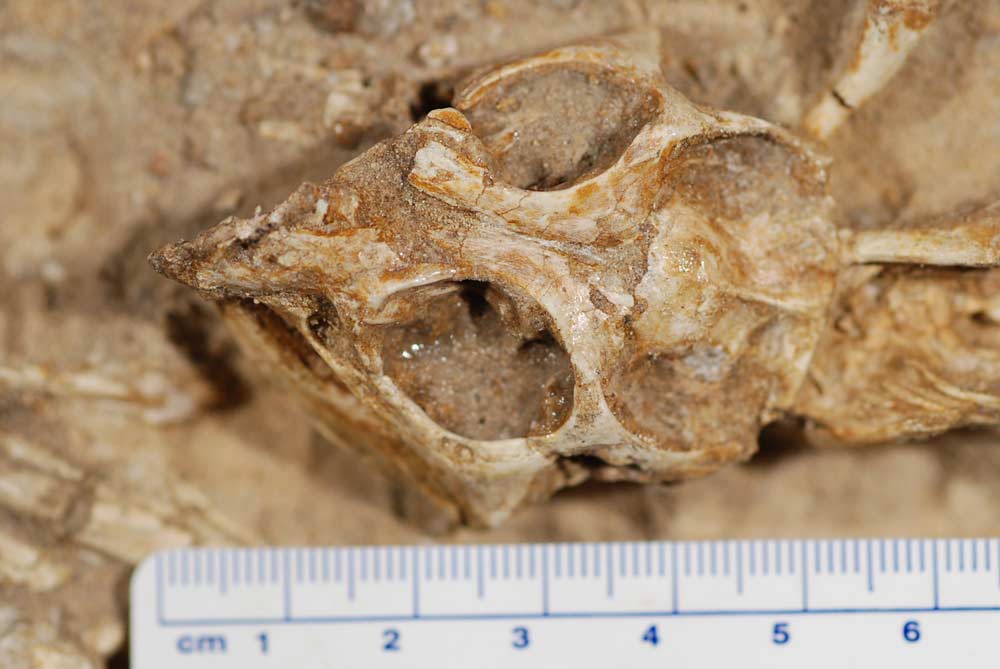
Since Protoceratops andrewsi was a relatively primitive member of its group of dinosaurs, the ceratopsians, nesting and parental care might have been traits found within other ceratopsians as well, such as Triceratops, the researchers said.
Protoceratops Infant
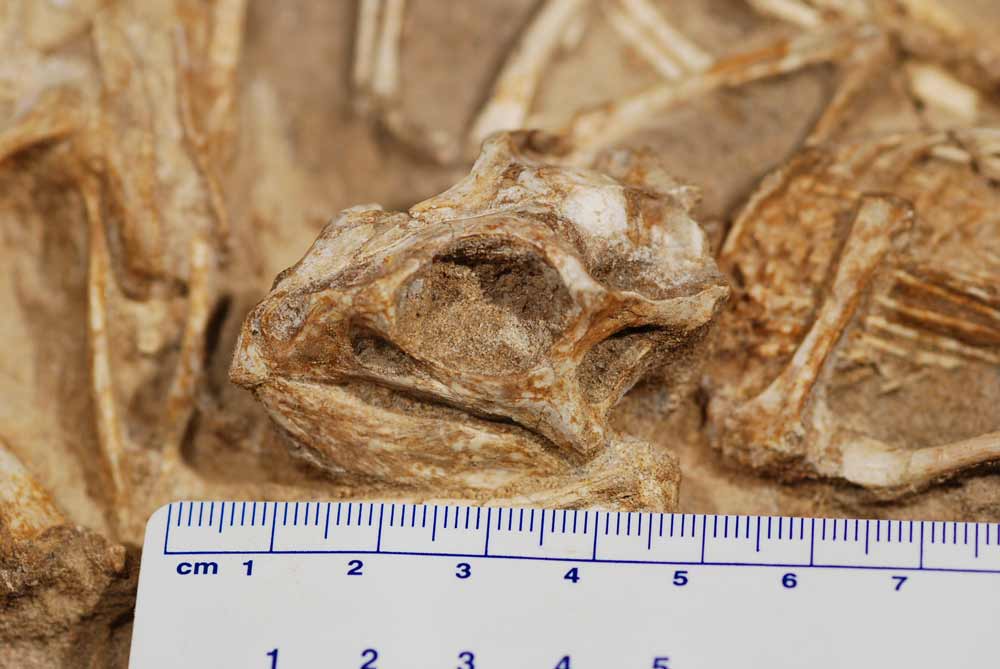
Another close-up view of one of the Protoceratops infants discovered in the Gobi Desert nest.
Protoceratops Frill
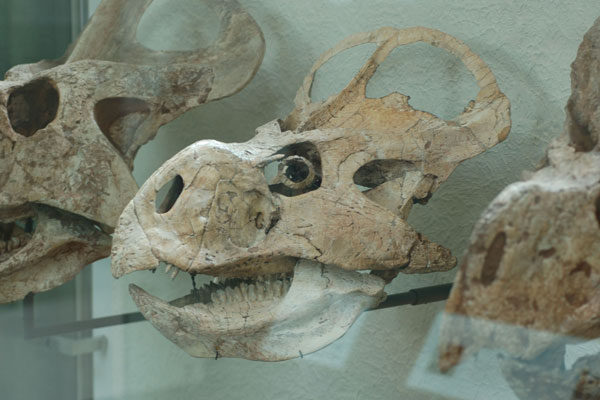
Known for the frill at the back of its head, Protoceratops andrewsi was a sheep-sized plant-eater that lived about 70 million years ago.
 Live Science Plus
Live Science Plus






